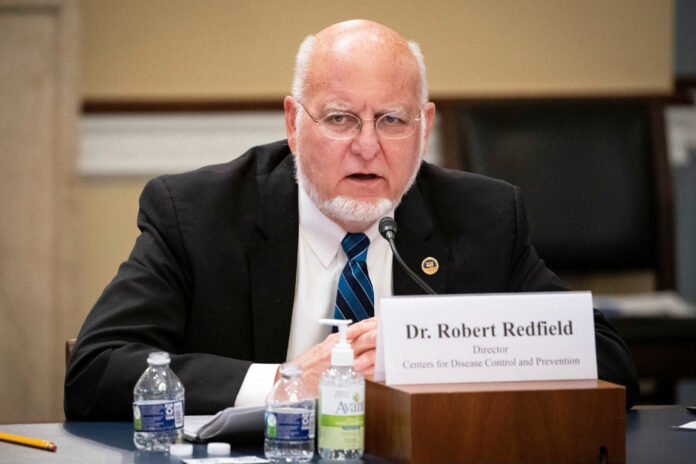The Centers for Disease Control and Prevention is considering tapping social media platform TikTok to encourage more young Americans to practice public health precautions as coronavirus cases surge among younger people, officials said Thursday.
Data indicates that the new infections seen across the country “are targeting younger individuals,” CDC Director Dr. Robert Redfield said on a conference call with reporters. Redfield said that while young people face a lower risk of severe disease and death due to Covid-19, a high rate of infection among young Americans increases the chances that they go on to infect older, at-risk people.
Young people might not be taking the pandemic as seriously as older Americans, CDC’s deputy director for infectious diseases, Jay Butler, said on the call.
“We may need to get out the message that young people are not somehow naturally immune to this virus, although they may be at lower risk of severe infection,” he said. “The tools that can be used include social media. We’re exploring TikTok.”
Operated by Beijing-based tech giant ByteDance, TikTok, is a social media platform focused on short-form video. The app uses an algorithm to determine what kind of videos a user likes and delivers them on a scrollable page. Organizations can also pay to place short-video advertisements on users’ pages. The app has exploded in popularity, especially among young people, in recent years.
Representatives of TikTok were not immediately available to comment on whether the CDC has been in touch about a public health campaign.
“That is something we’re looking into and I’m of the age that I have to stop and think what is a TikTok, but I’ve learned that over the past month,” Butler added. Beyond TikTok and other social media strategies, Butler said the CDC might issue public service announcements to urge Americans to practice physical distancing and to wear a mask.
Multiple officials in states with expanding outbreaks have attributed the rise in cases to young people failing to practice social distancing at bars that are overcapacity. In Florida, the average age of an infected person has continued to decline in recent weeks. On Wednesday, the state reported that the average age of patients was 33 years old, down from over 65 years old in March.
Florida Republican Gov. Ron DeSantis has pointed to the decreasing average age of patients as evidence that the state is effectively protecting its most vulnerable residents. However, White House coronavirus advisor Dr. Anthony Fauci warned Tuesday that scientists are seeing “more and more” complications with Covid-19 in young people.
DeSantis as well as Texas Gov. Greg Abbott have both attributed rising cases in their states to young people failing to practice social distancing, especially in bars.
While young people infected with the coronavirus who are otherwise healthy face a lower chance of dying or being hospitalized than older individuals, “there is some risk of severe illness, including among younger people,” Butler said. Scientists are also still researching the long-term health effects of getting infected with the coronavirus, which could lead to quality-of-life issues for young patients later in life.
Now, as the virus continues to spread widely among younger people, putting many people throughout the country at risk and setting back the country’s response to the pandemic, Redfield acknowledged the public health messaging has to be more effective.
“Whereas the impact and consequences of Covid infection on them may not be highly associated with hospitalization and death, they do act as a transmission connector for individuals that could in fact be at higher risk,” Redfield said of young people. “I remain concerned about trying to understand effective public health messaging that we need to get to those individuals that are under the age of 45, under the age of 30.”
Some public health officials have expressed frustration that the CDC remained largely quiet through March and April as the virus took hold, mostly in New York and the Northeast. It wasn’t until June that the CDC resumed regular news briefings after a hiatus that began in March.
Dr. Ashish Jha, director of the Harvard Global Health Institute, for example wrote in an op-ed in April that “the CDC has been inexplicably absent, and Americans are suffering and dying for it.”






